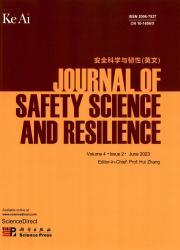Study on the influencing factors of piecewise multi-strain crossover epidemic spread under data contamination
Abstract
The ongoing impact of the novel coronavirus disease 2019 (COVID-19) on work and daily life persists as we transition from emergency to normal circumstances. The continuous mutation of viral strains has resulted in a shift from a single strain to multiple cross-strains, contributing to the spread of the epidemic. Variations in infection rates of the same strain occur because of the implementation of diverse preventive measures at different times. This study investigated the dynamics of the pandemic in the presence of concurrent strains. Building on the classical Susceptible, Exposed, Infected, and Recovered (SEIR) model, a robust piecewise multi-strain cross-epidemic trend prediction model was proposed that employs the Hodges–Lehmann estimator to handle uncertain and contamination-prone epidemic information. A comparative analysis of epidemic spread trend curves across diverse populations using different robust methods revealed the superiority of the Hodges–Lehmann estimator-based model over the traditional method. The accurate prediction results of the model demonstrate its high reliability in tracking the changing trend of the COVID-19 outbreak, thereby supporting its implementation in subsequent epidemic prevention and control measures.

 求助内容:
求助内容: 应助结果提醒方式:
应助结果提醒方式:


